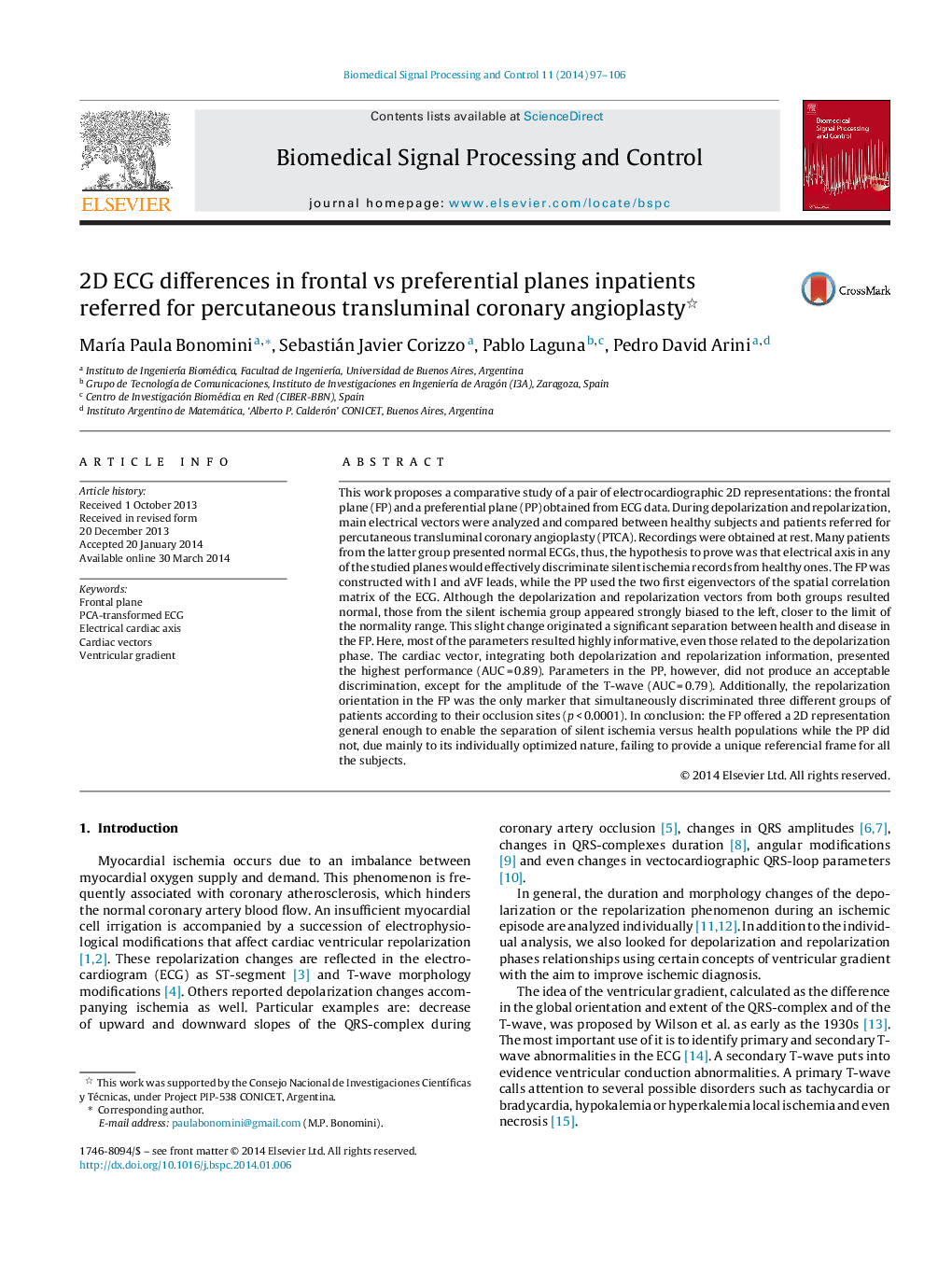| Article ID | Journal | Published Year | Pages | File Type |
|---|---|---|---|---|
| 558131 | Biomedical Signal Processing and Control | 2014 | 10 Pages |
•We compared cardiac vectors of ischemic and healthy patients in two different planes.•Planes under study: the Einthoven's plane (FP) and a PCA-transformed plane (PP).•We compared the ability to discriminate ischemia from health of both representations.•The FP enabled the discrimination of ischemic patients while the PP did not.
This work proposes a comparative study of a pair of electrocardiographic 2D representations: the frontal plane (FP) and a preferential plane (PP) obtained from ECG data. During depolarization and repolarization, main electrical vectors were analyzed and compared between healthy subjects and patients referred for percutaneous transluminal coronary angioplasty (PTCA). Recordings were obtained at rest. Many patients from the latter group presented normal ECGs, thus, the hypothesis to prove was that electrical axis in any of the studied planes would effectively discriminate silent ischemia records from healthy ones. The FP was constructed with I and aVF leads, while the PP used the two first eigenvectors of the spatial correlation matrix of the ECG. Although the depolarization and repolarization vectors from both groups resulted normal, those from the silent ischemia group appeared strongly biased to the left, closer to the limit of the normality range. This slight change originated a significant separation between health and disease in the FP. Here, most of the parameters resulted highly informative, even those related to the depolarization phase. The cardiac vector, integrating both depolarization and repolarization information, presented the highest performance (AUC = 0.89). Parameters in the PP, however, did not produce an acceptable discrimination, except for the amplitude of the T-wave (AUC = 0.79). Additionally, the repolarization orientation in the FP was the only marker that simultaneously discriminated three different groups of patients according to their occlusion sites (p < 0.0001). In conclusion: the FP offered a 2D representation general enough to enable the separation of silent ischemia versus health populations while the PP did not, due mainly to its individually optimized nature, failing to provide a unique referencial frame for all the subjects.
